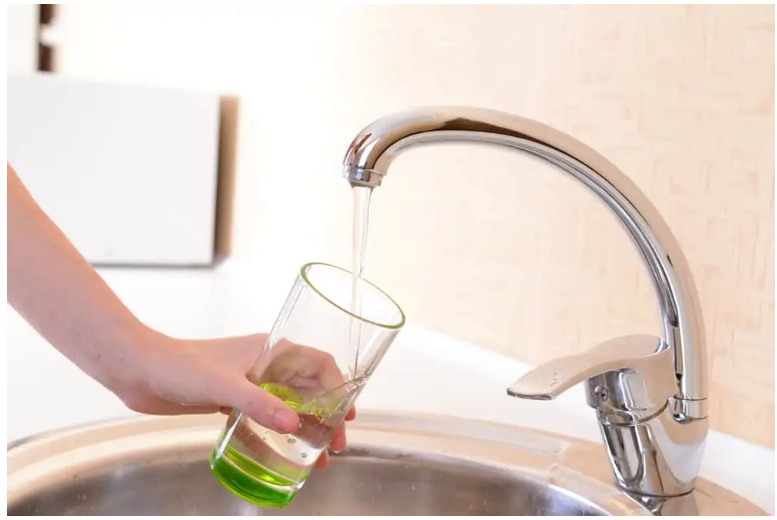Quick Fixes for Low Water Pressure in Your Home
Quick Fixes for Low Water Pressure in Your Home
Blog Article
How do you feel about Low Water Pressure in the House??

Low water pressure in your home can be a discouraging issue, impacting whatever from showering to cleaning meals. If you're experiencing weak water flow, there are several feasible reasons and options to check out. In this guide, we'll review usual reasons for low tide stress and useful actions to attend to the issue properly.
Introduction to Low Tide Pressure
Low tide pressure takes place when the circulation of water from your faucets, showers, and various other components is weak than normal. This can make everyday tasks a lot more difficult and much less efficient. Understanding the root causes of low water stress is crucial to finding the best solution.
Common Reasons For Low Tide Stress
Pipeline Obstructions
Gradually, pipelines can become obstructed with mineral deposits, debris, or debris, limiting the circulation of water. This is an usual concern in older homes with galvanized steel pipelines.
Deterioration
Rust within pipes can lead to leakages and minimized water pressure. Rust accumulation can restrict water circulation, particularly in aging plumbing systems.
Faulty Pressure Regulators
Pressure regulatory authorities are accountable for keeping constant water stress in your house. If they malfunction, it can result in low water stress or irregular flow throughout the house.
Local Water Supply Issues
In some cases, the issue exists outside your home. Metropolitan supply of water concerns, such as main line leaks or maintenance work, can temporarily decrease water stress in your location.
How to Identify Low Tide Pressure
Inspecting Taps and Fixtures
Begin by examining the water pressure at different faucets and components throughout your home. If the issue is isolated to particular areas, it may show localized troubles.
Examining Pipelines
Check noticeable pipes for indications of leaks, rust, or clogs. Focus on any kind of uncommon audios, such as knocking or rattling pipes, which might show issues within the plumbing system.
Consulting with a Plumber
If you're incapable to determine the source of low tide stress, consider employing a specialist plumber to perform a complete evaluation. They can recognize underlying issues and suggest appropriate options.
Do It Yourself Solutions to Repair Low Tide Stress
Cleaning Aerators and Showerheads
Mineral deposits can gather in aerators and showerheads, reducing water flow. Eliminate and cleanse these parts routinely to enhance water stress.
Flushing Hot Water Heater
Debris build-up in the hot water heater can limit circulation and reduce efficiency. Flushing the container regularly helps eliminate debris and maintain ideal performance.
Inspecting Stress Regulatory Authority
Make certain that the stress regulatory authority is functioning properly. Adjusting or changing the regulatory authority can aid bring back appropriate water stress throughout your home.
Cleaning Clogs in Pipeline
For minor obstructions, attempt utilizing a plumbing snake or chemical drain cleaner to clear blockages in pipelines. Beware when using chemicals and comply with safety standards.
When to Call a Professional Plumber
If DIY initiatives fail to solve the concern or if you think considerable plumbing issues, it's finest to seek aid from a certified plumber. They have the expertise and tools to address complex issues safely and effectively.
Preventive Measures to Maintain Water Stress
Normal Upkeep
Arrange routine upkeep for your plumbing system to stop concerns such as rust, leaks, and clogs. Resolving small problems early can aid prevent more substantial repair services later on.
Installing a Stress Booster
Consider installing a stress booster pump to enhance water stress in locations with consistently reduced circulation. This can be particularly advantageous for multi-story homes or properties with high-demand fixtures.
Surveillance Water Usage
Bear in mind water usage habits and prevent overtaxing the plumbing system. Straightforward modifications, such as shocking showers and washing lots, can aid maintain appropriate water pressure.
Verdict
Handling low tide stress can be frustrating, however recognizing the underlying reasons and applying ideal remedies can recover optimum circulation throughout your home. Whether it's cleaning up aerators, checking pipes, or speaking with a plumber, taking proactive actions can make sure a consistent supply of water for your daily demands.
FOUR WAYS TO FIX LOW WATER PRESSURE NOW
Turning on a shower or faucet only to find the water comes out in a sad, slow drizzle is never a good feeling. How exactly are you supposed to wash a pan or take a quick shower when it takes 10 minutes just to rinse off a little soap? The good news is that when your water pressure is bad, there's always a cause: typically one that can be easily fixed. Here are some of the most common causes of low pressure and what you can do to fix the issue:
DEBRIS AND MINERAL DEPOSIT BUILDUPS
If you notice low water pressure from just one or two of the fixtures in your house, the problem likely has to do with debris buildup. Water is full of minerals and other debris, all of which can accumulate in your pipes and on your fixtures. This can cause a blockage that affects how much water flows through. To fix this, try filling a small plastic bag with white vinegar, and use a rubber band to hang it around your showerhead or faucet. Let the head of the fixture soak for a few hours, and the vinegar should loosen the deposits.
WATER LEAKS
Leaks are another common cause of low water pressure. If water is flowing out of your plumbing through a hole or crack before it can reach your fixture, the pressure coming out of the faucet or showerhead will be lower. A plumbing professional is your best bet for finding and repairing a leak in your water supply pipes.
Leaks are another common cause of low water pressure. If water is flowing out of your plumbing through a hole or crack before it can reach your fixture, the pressure coming out of the faucet or showerhead will be lower. A plumbing professional is your best bet for finding and repairing a leak in your water supply pipes.
FOUR WAYS TO FIX LOW WATER PRESSURE NOW
Turning on a shower or faucet only to find the water comes out in a sad, slow drizzle is never a good feeling. How exactly are you supposed to wash a pan or take a quick shower when it takes 10 minutes just to rinse off a little soap? The good news is that when your water pressure is bad, there's always a cause: typically one that can be easily fixed. Here are some of the most common causes of low pressure and what you can do to fix the issue:
DEBRIS AND MINERAL DEPOSIT BUILDUPS
If you notice low water pressure from just one or two of the fixtures in your house, the problem likely has to do with debris buildup. Water is full of minerals and other debris, all of which can accumulate in your pipes and on your fixtures. This can cause a blockage that affects how much water flows through. To fix this, try filling a small plastic bag with white vinegar, and use a rubber band to hang it around your showerhead or faucet. Let the head of the fixture soak for a few hours, and the vinegar should loosen the deposits.
WATER LEAKS
Leaks are another common cause of low water pressure. If water is flowing out of your plumbing through a hole or crack before it can reach your fixture, the pressure coming out of the faucet or showerhead will be lower. A plumbing professional is your best bet for finding and repairing a leak in your water supply pipes.
Leaks are another common cause of low water pressure. If water is flowing out of your plumbing through a hole or crack before it can reach your fixture, the pressure coming out of the faucet or showerhead will be lower. A plumbing professional is your best bet for finding and repairing a leak in your water supply pipes.
A VALVE ISSUE
If you have low water pressure throughout your home, check your main shut-off valve to make sure it's completely open. You may also want to see if there's a pressure-reducing valve installed. If there is, have a plumber help you adjust the settings to get the pressure you're looking for.
OTHERS USING WATER
Believe it or not, your low water pressure could be caused by your neighbors. If you notice low pressure at certain times of day, it may be because you and the people living next to you have similar schedules - when everyone is showering at the same time, the pressure will be lower in every home. Low pressure throughout the neighborhood may also be caused by an issue with your municipal water supply. If that's the case, call the supplier to see if they're working on the issue.
https://www.rotorooter.com/blog/water-leaking/low-water-pressure-fixes/

As an avid reader about Dealing with Low Water Pressure in Your Home, I imagined sharing that chunk was sensible. Are you aware of somebody who is serious about the topic? Feel free to promote it. Thanks so much for your time invested reading it.
Click Here Report this page